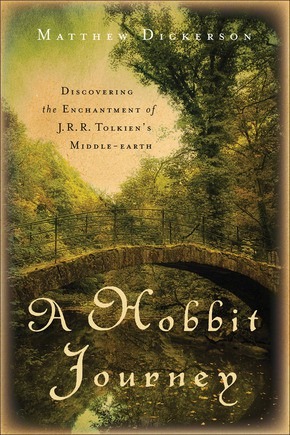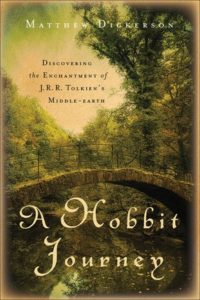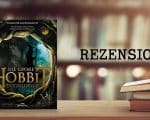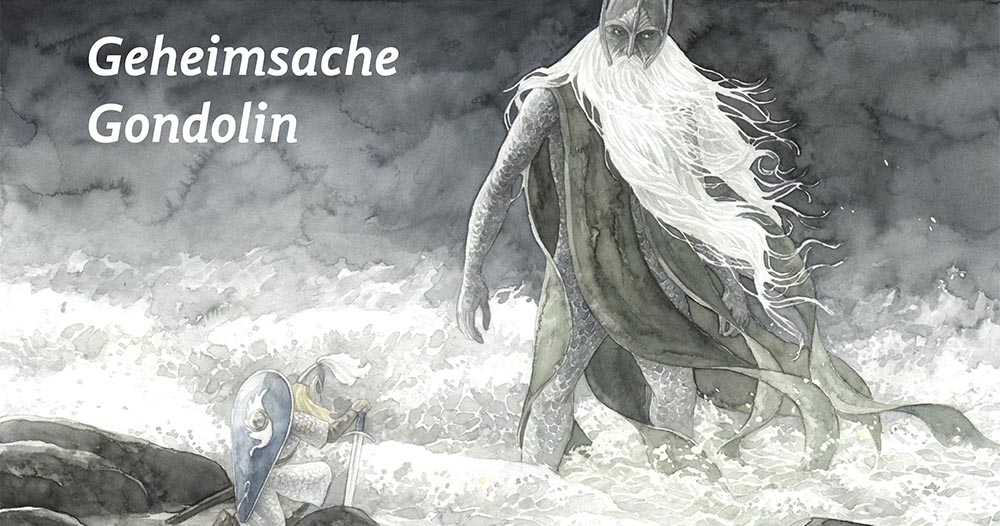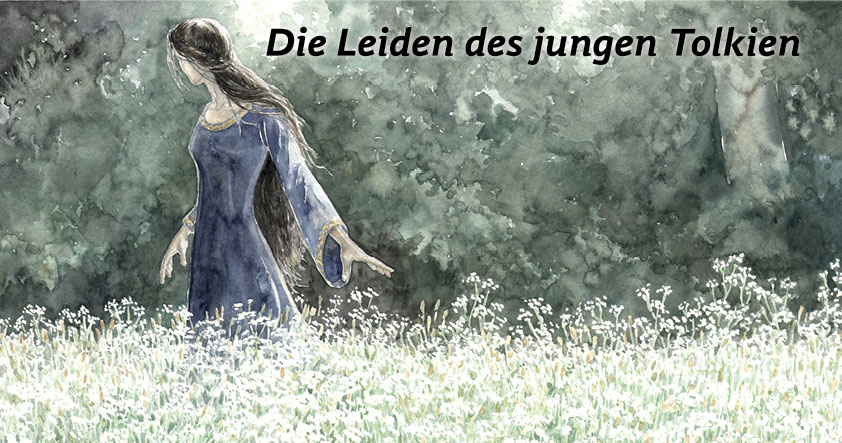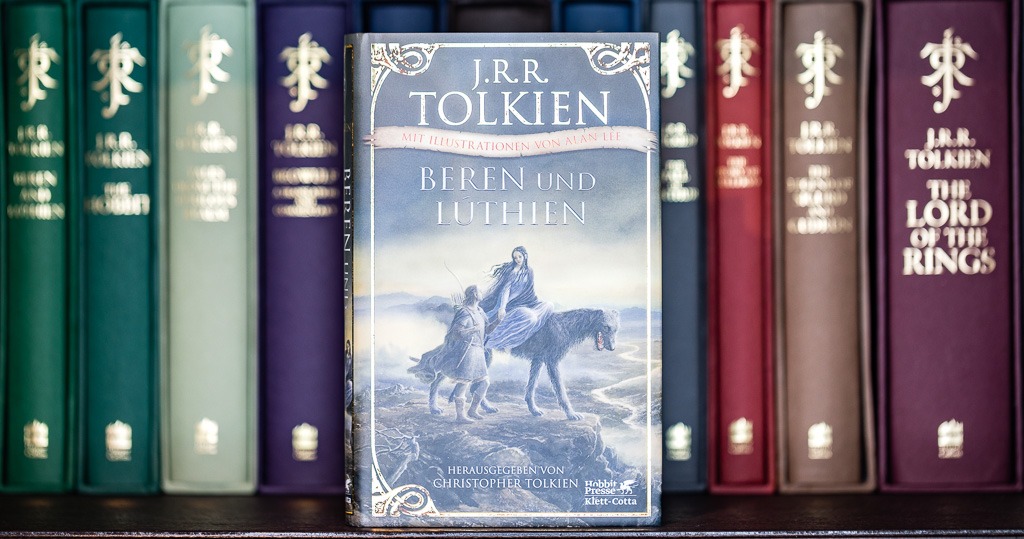Matthew Dickersons A Hobbit Journey, Ende letzten Jahres im Brazos Verlag erschienen, ist eine überarbeitete und erweiterte Ausgabe von Following Gandalf, welches 2003 veröffentlicht wurde. Dickerson, ein IT-Professor am Middlebury College in Vermont, USA, schreibt in der Einleitung, dass er eine Neuauflage seines früheren Werks mit dem Untertitel Epic Battles and Moral Victory in The Lord of the Rings geschrieben hat, da in jüngerer Zeit viele neue akademische Veröffentlichungen zum Thema erschienen sind. Darauf folgt eine langatmige Rechtfertigung warum Interpretationen legitim sind, obwohl dies als selbstverständlich für jedwede Auseinandersetzung mit Texten in der Literaturwissenschaft vorausgesetzt werden sollte. Und schon sind wir bei dem Problem angelangt, das ich mit diesem Buch habe.
Dickerson beleuchtet viele wichtige Aspekte in Tolkiens Werken, vor allem die Moral, und hinterlässt beim Leser dabei neue Einblicke und neue Ansatzpunkte, um ihre Relevanz in der heutigen Zeit zu erforschen. Leider kann ich mich mit seinem Schreibstil überhaupt nicht anfreunden. Er hat ein Talent dafür, Fragen mit völlig offensichtlichen Antworten zu stellen, und gibt dann bei deren Beantwortung zu viele Beispiele (bis es auch dem letzten, pardon, Idioten klar ist), die das Lesen einfach langweilig machen. Die Präsentation erinnert mich an eine Stunde in der Mittelstufe, und ist somit natürlich in dieser Form völlig legitim, wenn sie denn auf genau dieses Publikum ausgerichtet ist. In der Danksagung bedankt sich Dickerson auch tatsächlich bei seinen Studenten für deren Input zu den Themen, allerdings ist Middlebury College eine Hochschule, so dass dieser spezielle Schreibstil nicht wirklich gerechtfertigt erscheint.
Das Buch hätte viel fokussierter und kürzer ausfallen könne, wenn der Autor nicht so viele Beispiele zur Untermauerung seiner Standpunkte angeführt hätte. Und irgendwie schleicht sich das Gefühl ein, dass er das durchaus selbst von Zeit zu Zeit so sieht. „Wir könnten damit weitermachen Textauszüge zu zitieren“, schreibt er auf S. 16 (meine Übersetzung), auf der er Tolkiens Standpunkt zu Allegorie und Anwendbarkeit darstellt, und prompt folgt eine weitere Passage und noch eine zusätzliche in der Fußnote. „Wir könnten, wahrscheinlich ermüdend, weitere Passagen in denen der Feind Foltertechniken anwendet erforschen“ (S. 27), wieder gefolgt von einem weiteren Beispiel. „Die Liste von Beispielen ist lang“ (S. 96), „nd die Liste könnte weitergehen“ (S. 97) – und sie tut es! Einige der Zitate werden außerdem in fast genau dem gleichen Wortlaut wiederholt, um einen Punkt hervorzuheben, s. z.B. S. 68 („Mit anderen Worten“) oder S. 92 („das eigene Haus abreißen“).
Trotzdem enthält das Buch aufschlussreiche und wichtige Beobachtungen zu Themen wie die Behandlung von Gefangenen und die Ethik des Krieges, Sanftmut als heldenhafte Charakteristik, der Preis des Sieges, die Freiheit der Wahl und des Willens, die Macht des Einen Rings, Verantwortung oder Erlösung. Trotz der Form, die mich leider oft dazu verführt hat, den Text nur überfliegen zu wollen, schafft es Dickerson, neues Licht auf bestimmte Aspekte in Tolkiens Werken zu werfen und schafft somit einen soliden Beitrag zur neueren Tolkien-Forschung.
Dickerson, Matthew. A Hobbit Journey: Discovering the Enchantment of J.R.R. Tolkien’s Middle-earth. Grand Rapids: Brazos Press, 2012.
Marie- Noëlle Biemer studierte Anglistik, Russistik und BWL an der Justus-Liebig-Universität in Gießen und Business Studies an der University of Bradford, UK. Sie arbeitet als Redakteurin bei einer englischsprachigen Fachzeitschrift in Frankfurt. Zu ihrem Lieblingsthema William Morris und dessen Einfluss auf J.R.R. Tolkien hat sie bereits zwei Artikel veröffentlicht. Als Pressesprecherin der Deutschen Tolkien Gesellschaft kümmert sie sich um Presseanfragen, –mitteilungen und die Öffentlichkeitsarbeit des Vereins. Sie ist außerdem Redakteurin der DTG Website.
Review: A Hobbit Journey
Matthew Dickerson’s A Hobbit Journey, published late last year by Brazos Press, is a revised and expanded edition of Following Gandalf, originally published in 2003. Dickerson, a professor of computer science at Middlebury College in Vermont, USA, writes in his introduction that he wrote an update of his earlier work, subtitled Epic Battles and Moral Victory in The Lord of the Rings, due to numerous new scholarly publications over the past years. He follows with a lengthy justification of why interpretation is legitimate, though that should be a given for any scholarly discussion in literary criticism. Which already brings me to my problem with the book.
Dickerson discusses a lot of important aspects in Tolkien’s works, foremost on morality, leaving the reader with new insights and new angles to explore their relevance to our time. But I find I can hardly bear his style. He has a talent for asking questions with totally obvious answers, then gives too many examples to answer them, making everything so crystal clear that it becomes tedious. The presentation reminds me of a lesson in junior high / before O-levels, and is thus, of course, totally legitimate if intended for that particular audience. In the acknowledgements, Dickerson indeed thanks his students for input on the topics he explores, but Middlebury College is part of the higher education system, so no excuse for this particular writing style.
The book could have been a lot more focused and concise if the author had not given quite as many examples to demonstrate his points. And I somehow have a feeling he recognises that himself from time to time. “We could go on citing passages,” he writes on p. 16 where he elaborates on Tolkien’s stance on allegory vs. applicability, which is nevertheless followed by another passage and yet another one in a footnote. On p. 27, “e could continue, perhaps tediously, to explore additional passages in which the enemy applies the technique of torture,” which is immediately followed by another example. “The list of examples is long” (p. 96), “nd the list could go on” (p. 97) – and it does! Some quotations are also repeated in almost the same wording to underline a point, c.f. e.g. p. 68 (“In other words”) or p. 92 (“pull down […] own house”).
The book does however convey insightful and important observations on such topics as the treatment of prisoners and the ethics of war, ‘gentleness’ as a heroic feature, the cost of victory, freedom of choice and will, the power of the One Ring, stewardship or redemption. Despite the form, which sorely tempted me to skim through parts of the text, Dickerson manages to put a new perspective on certain aspects of Tolkien’s works and thus adds a solid contribution to recent Tolkien scholarship.
Dickerson, Matthew. A Hobbit Journey: Discovering the Enchantment of J.R.R. Tolkien’s Middle-earth. Grand Rapids: Brazos Press, 2012.
Marie-Noëlle Biemer studied English, Russian and Business at the Justus-Liebig-Universität in Gießen and Business Studies at the University of Bradford, UK. She now works as a news editor for an English-language publication in Frankfurt. She has published two articles on her favourite topic of William Morris and his influence on J.R.R. Tolkien. As press officer of the German Tolkien Society she takes care of the society’s public relations. She is also an editor of the society’s webpage.

